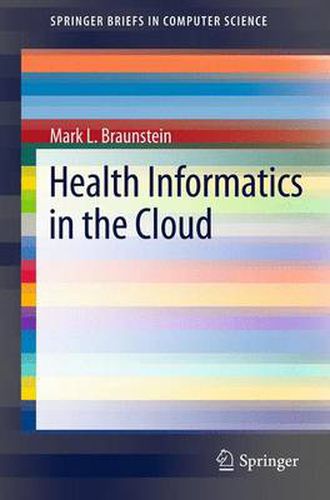Readings Newsletter
Become a Readings Member to make your shopping experience even easier.
Sign in or sign up for free!
You’re not far away from qualifying for FREE standard shipping within Australia
You’ve qualified for FREE standard shipping within Australia
The cart is loading…






This title is printed to order. This book may have been self-published. If so, we cannot guarantee the quality of the content. In the main most books will have gone through the editing process however some may not. We therefore suggest that you be aware of this before ordering this book. If in doubt check either the author or publisher’s details as we are unable to accept any returns unless they are faulty. Please contact us if you have any questions.
Despite its high cost, the US healthcare system produces relatively short life spans, and is wasteful, inefficient and has serious safety and quality issues. While other industries have surmounted similar challenges by transforming themselves through information technology, healthcare lags behind. Major reasons are that our approaches to care delivery and financial incentives were designed for a bygone era. Beyond that the technology offered to practitioners has often been overly expensive, poorly designed, overly proprietary, hard to implement and difficult to use. Spurred by a unique, one-time Federal stimulus and the new mobile, wireless and cloud technologies now available, this landscape is rapidly changing. To succeed going forward practitioners, and those interested in entering the field, need to understand the new driving forces and have a basic understanding of contemporary clinical informatics. Practitioners, in particular, need to understand the alternative technologies and approaches available for their use in individual patient care and more continuous management of their chronic disease patients. To efficiently meet these needs, this book provides an introduction to the rationale for care transformation through clinical informatics; its application to patient care outside of hospitals; and a look at its future. Key points are illustrated throughout by actual examples of open source and commercial health IT products and services. While written with practitioners and students entering the field of clinical informatics in mind, the book eschews technical terminology and is easily accessible by the lay reader not proficient in clinical medicine or information technology.
$9.00 standard shipping within Australia
FREE standard shipping within Australia for orders over $100.00
Express & International shipping calculated at checkout
This title is printed to order. This book may have been self-published. If so, we cannot guarantee the quality of the content. In the main most books will have gone through the editing process however some may not. We therefore suggest that you be aware of this before ordering this book. If in doubt check either the author or publisher’s details as we are unable to accept any returns unless they are faulty. Please contact us if you have any questions.
Despite its high cost, the US healthcare system produces relatively short life spans, and is wasteful, inefficient and has serious safety and quality issues. While other industries have surmounted similar challenges by transforming themselves through information technology, healthcare lags behind. Major reasons are that our approaches to care delivery and financial incentives were designed for a bygone era. Beyond that the technology offered to practitioners has often been overly expensive, poorly designed, overly proprietary, hard to implement and difficult to use. Spurred by a unique, one-time Federal stimulus and the new mobile, wireless and cloud technologies now available, this landscape is rapidly changing. To succeed going forward practitioners, and those interested in entering the field, need to understand the new driving forces and have a basic understanding of contemporary clinical informatics. Practitioners, in particular, need to understand the alternative technologies and approaches available for their use in individual patient care and more continuous management of their chronic disease patients. To efficiently meet these needs, this book provides an introduction to the rationale for care transformation through clinical informatics; its application to patient care outside of hospitals; and a look at its future. Key points are illustrated throughout by actual examples of open source and commercial health IT products and services. While written with practitioners and students entering the field of clinical informatics in mind, the book eschews technical terminology and is easily accessible by the lay reader not proficient in clinical medicine or information technology.